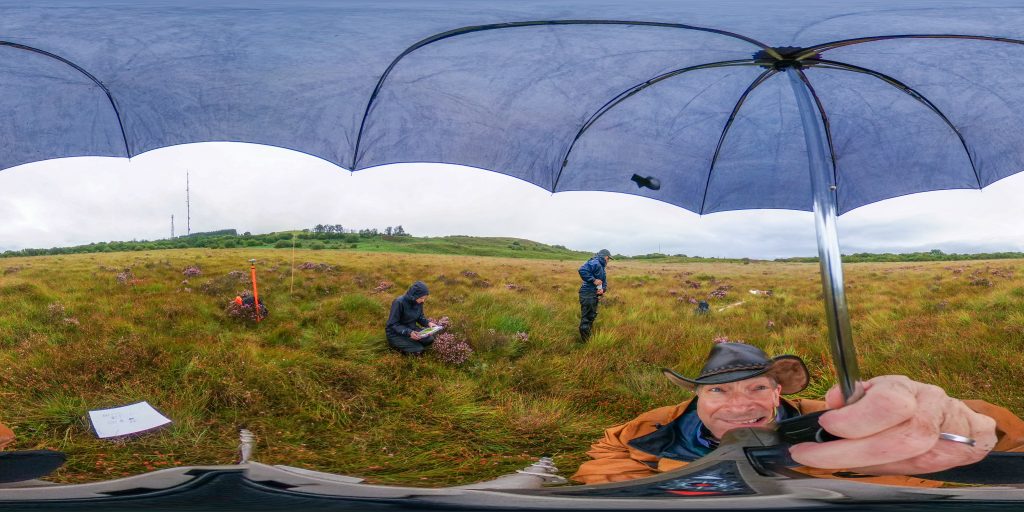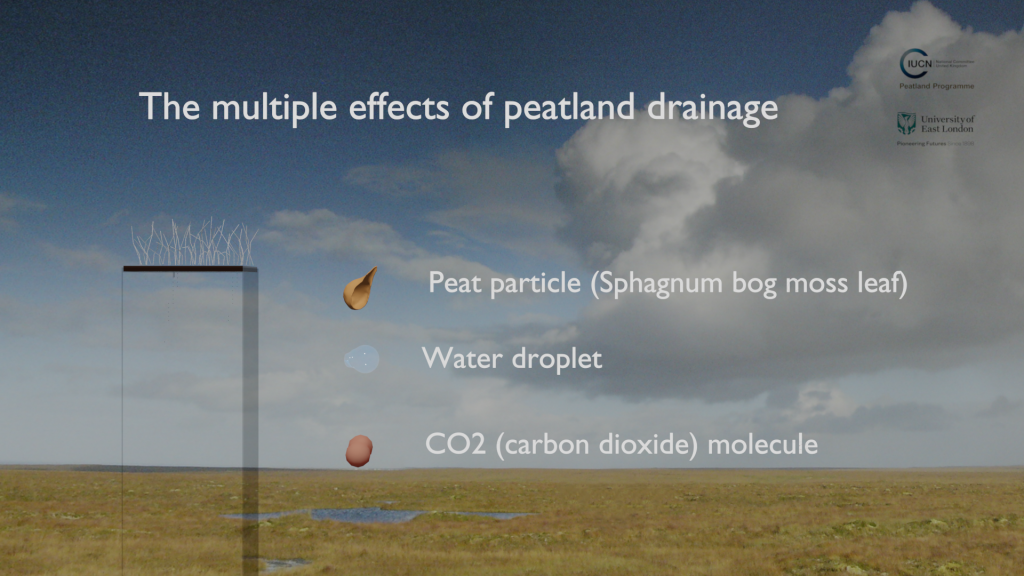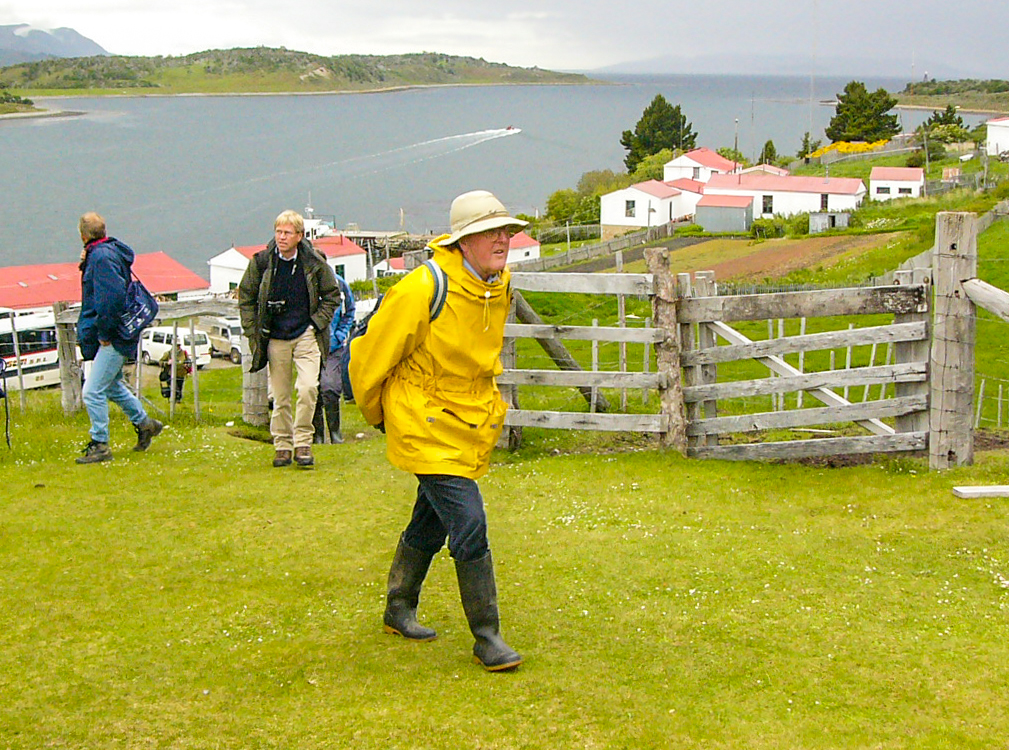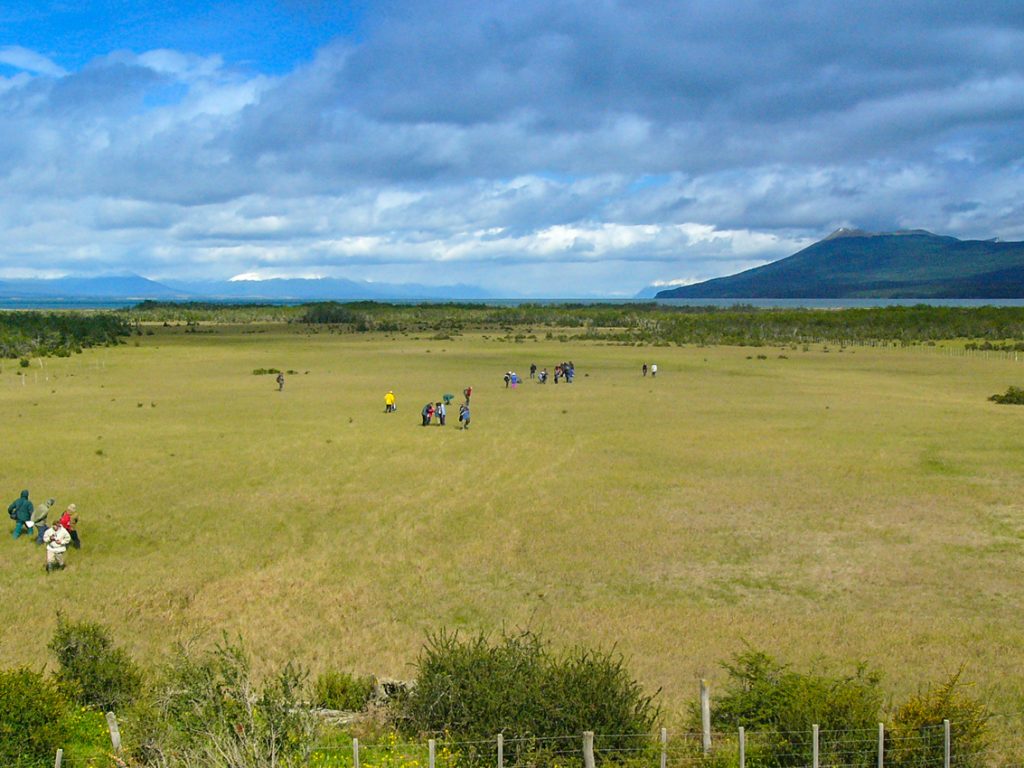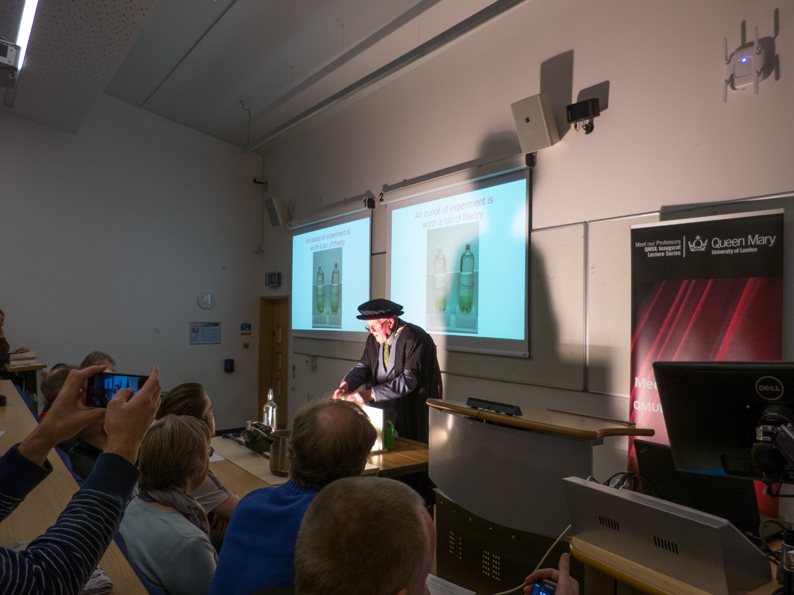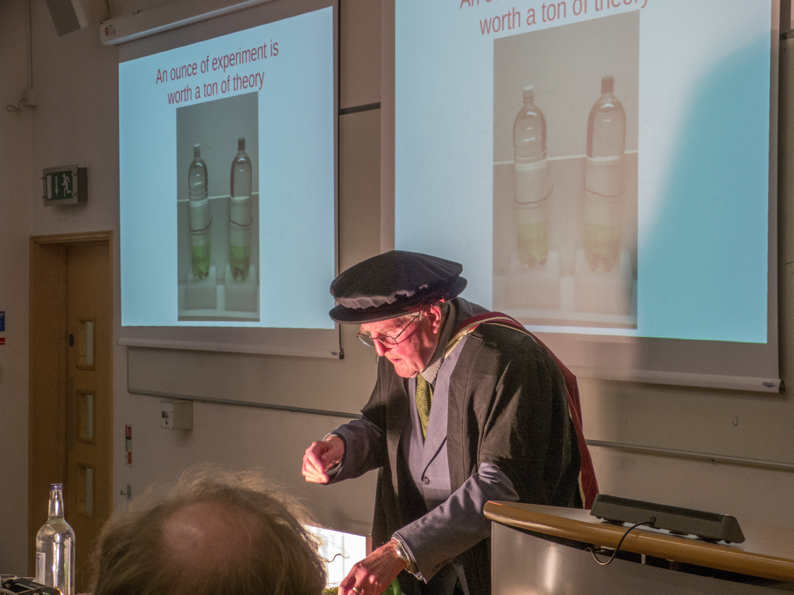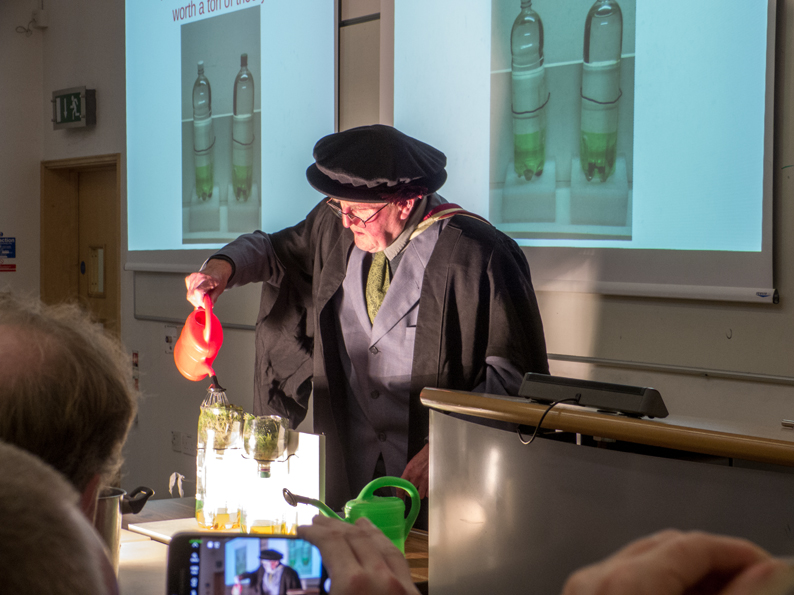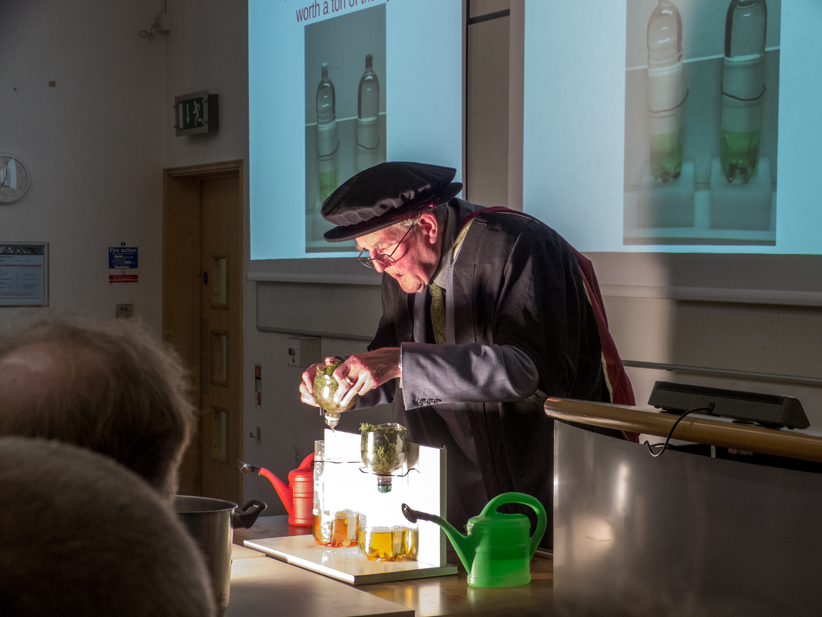Dawn on 25th July brought with it huge streamers of cirrus above drawn-out banks of stratocumulus which, once again, steadily thickened from the west (as ever, the panoramas are worth clicking on to see the full image):

This time, however, the rain held off and the sky even began to clear somewhat as the day wore on. This made hunting for our permanent transect markers with our Bill Wyman Signature metal detectors (yes, still that Bill Wyman! – he loves metal detecting and designed these himself…) a rather more pleasant business than had been the case for the past couple of days:
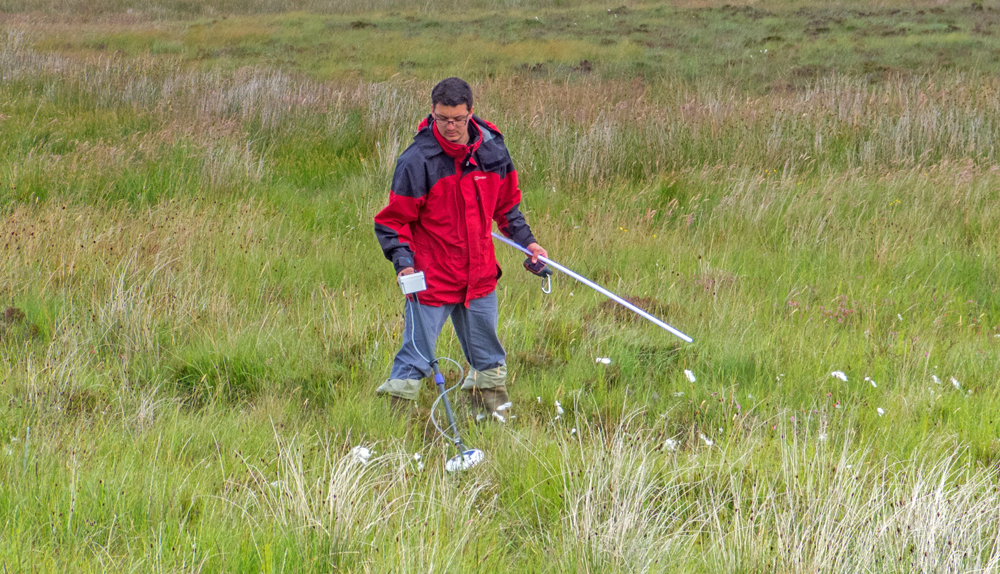
The look on Jack’s face says everything about the satisfaction of finding yet another of our precise transect locations in this vast open landscape – thanks Bill…!!
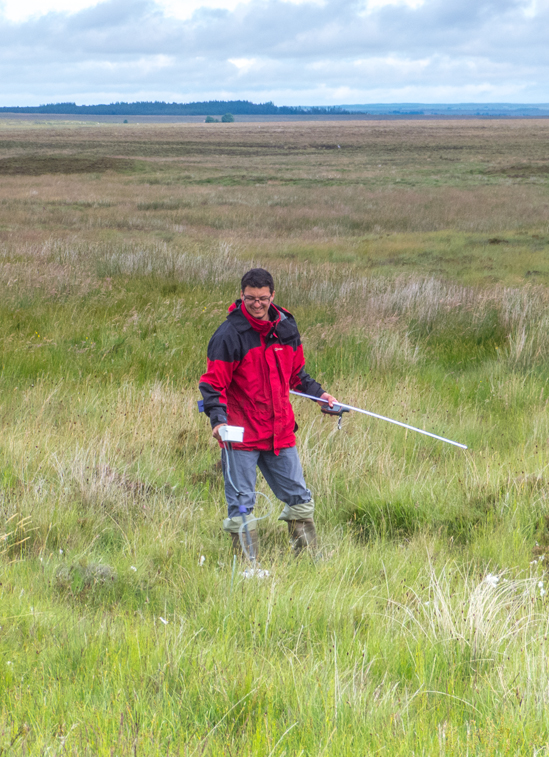
Munsary Cottage is soon to lose its roof because it is already unsafe and would cost large sums of money on a regular basis to maintain. Consequently the decision has been made to remove the roof and use the walls for all-weather display materials, while at the same time providing some shelter from the driving wind and rain for anyone visiting, or working on, the site. These photos are therefore a final farewell to the Munsary Cottage roof – as well as showing the rather confused state of the sky today, with stratocumulus building up to cumulonimbus which dumped localised showers in places, but happily we all stayed dry for once:
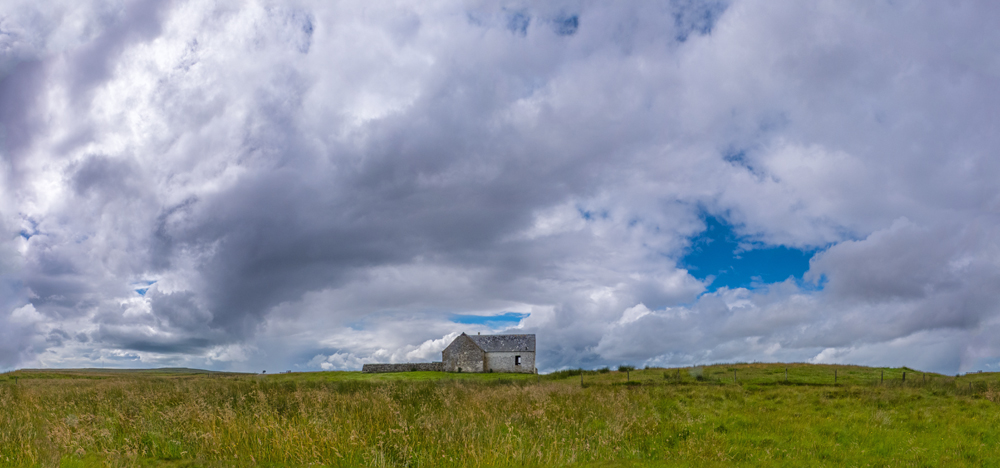
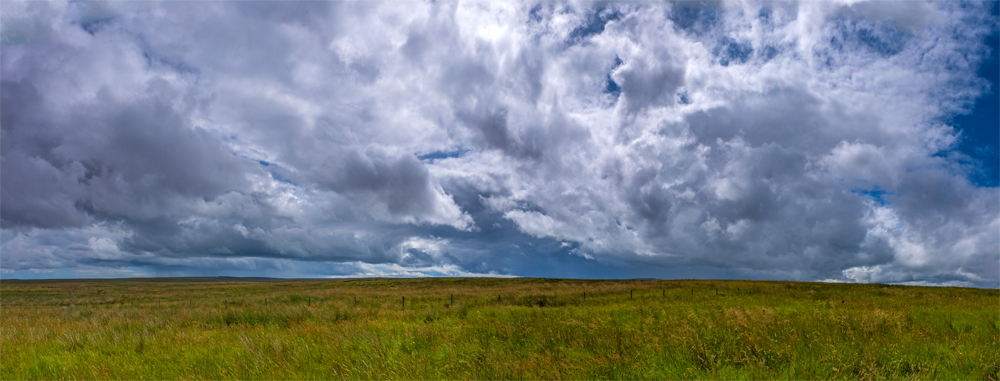
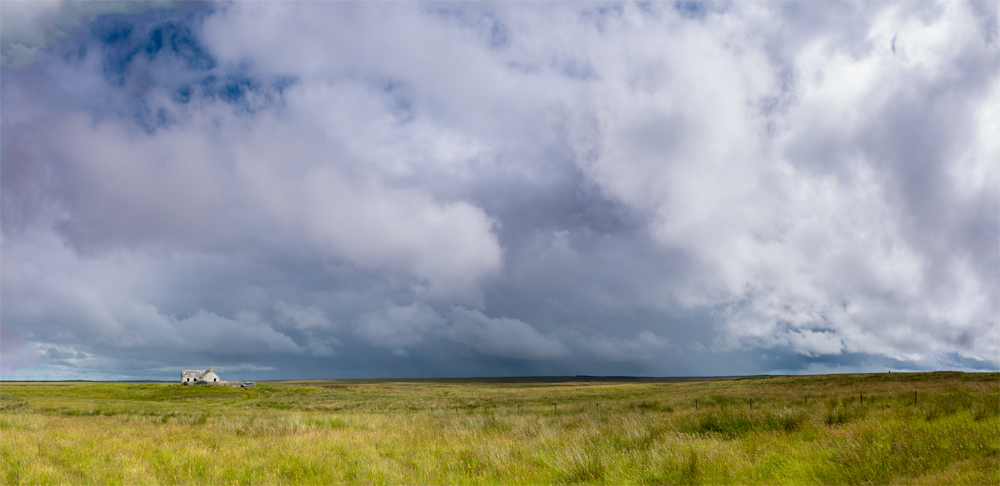
The three teams had scattered to differing parts of the Reserve today, and as Jack and I were recording several transects quite close to Munsary Cottage we arrived back at the cottage before the other teams. We therefore had time to watch the pair of pied wagtails (Motacilla alba) who had made a nest in the dilapidated cottage bringing food to their increasingly noisy young. Meanwhile the builders brought in by Plantlife to make the cottage safe were very careful not to disturb the youngsters in the nest:
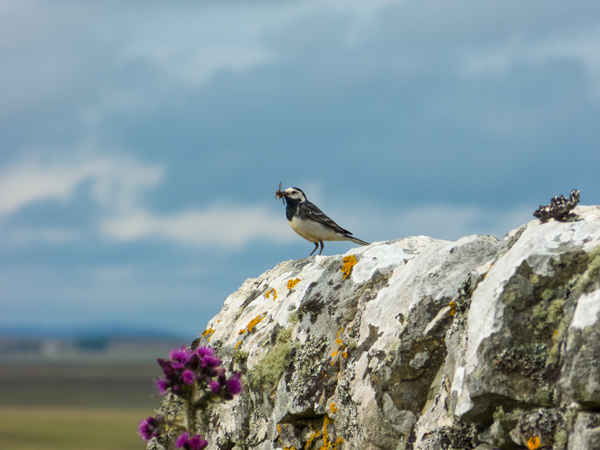
One parent had managed to catch a very large hover fly (Syrphidae Family, possibly Eupeodes corollae? which looks possible from the NBN Gateway distribution map). Anyway, a juicy morsel for some lucky nestling:
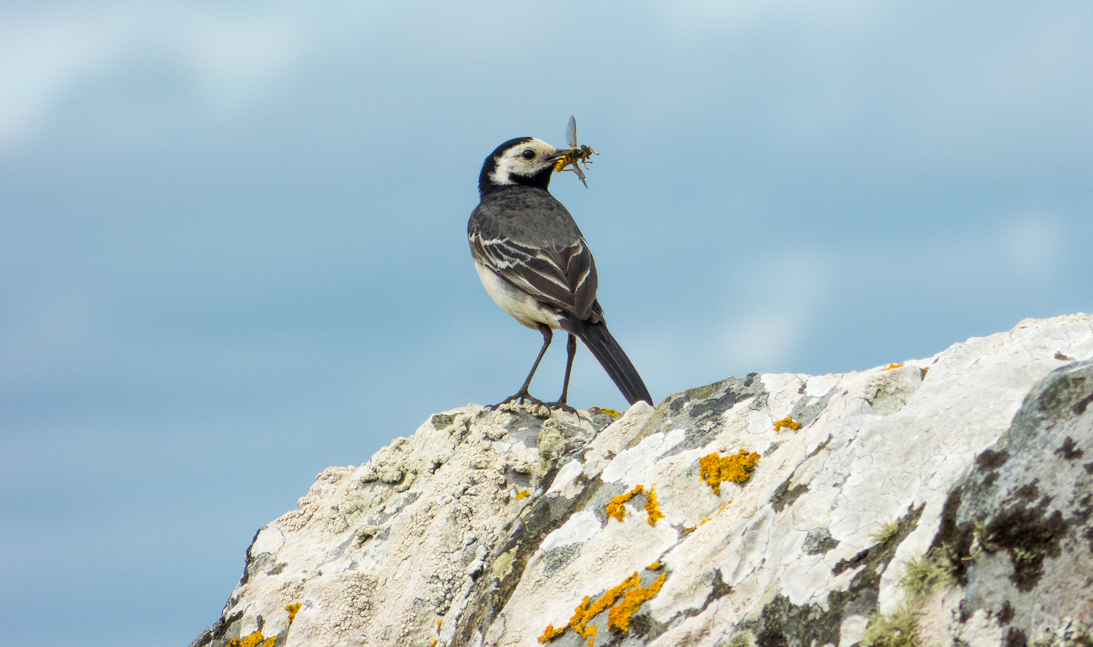
Meanwhile a male stonechat was scolding us roundly with his stone-clinking call from the fence that surrounds the cottage:
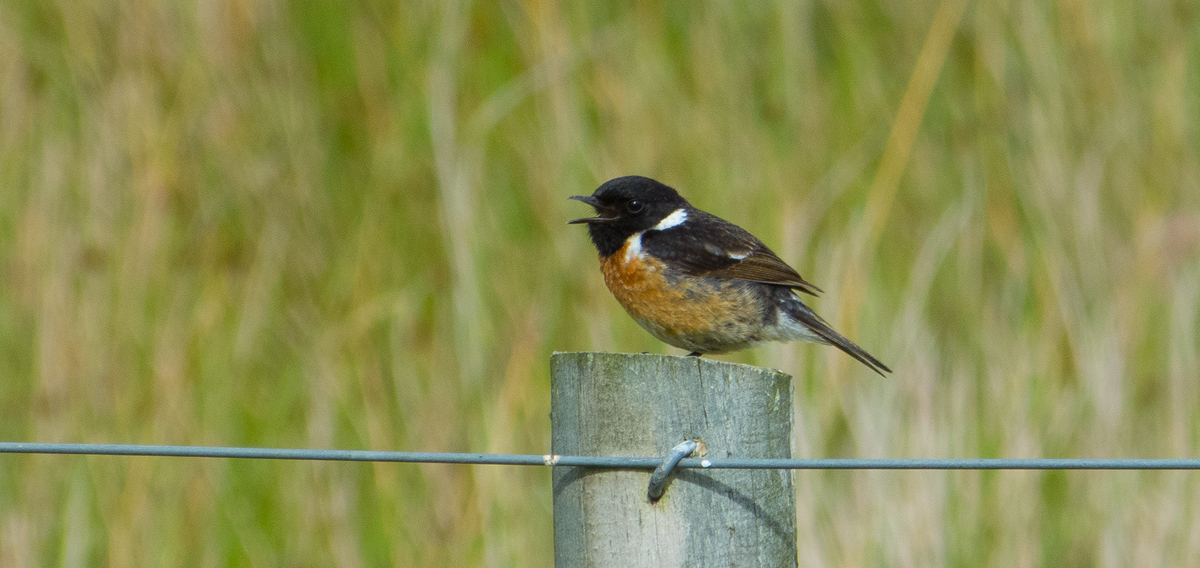
By the time we’d left the site it was getting late and we hadn’t really sorted out dinner, so I suggested doing a quick and easy but fun meal that my wife Hiroe often conjures up when we are in a rush: sliced tomatoes with fresh coriander, sliced avocados, sliced mozarella, garlic bread with dipping olive oil, olives, smoked salmon and prawns. Minimal preparation, only the bread needs heating, and we ate ourselves to a satisfied standstill:
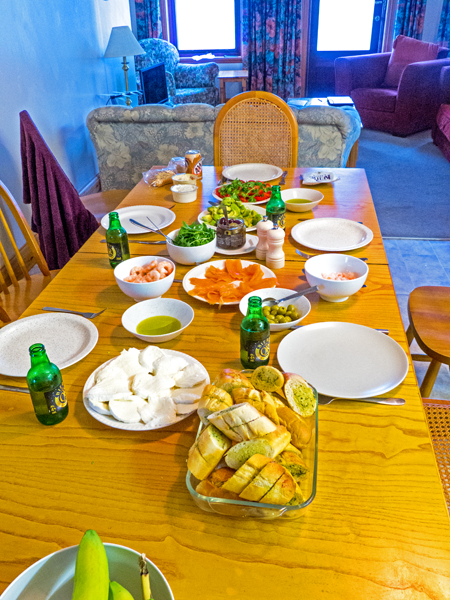
I should add that although this was an unplanned surprise meal, the various chef rotations during our stay all produced meals which were not merely filling and satisfying for fellow hungry fieldworkers, but also really tasty – always an important element in keeping a survey team happy – and the added bonus of Jerushah’s cake baking and desserts provided a very pleasant way of rounding off the meals.
The following day was a long steady slog to the south-western region of the Reserve. The sky was pretty gloomy all day, but at least it kept us cool for the long uphill slog on the way out and what felt like the even longer slog back to the cottage at the end of the day:
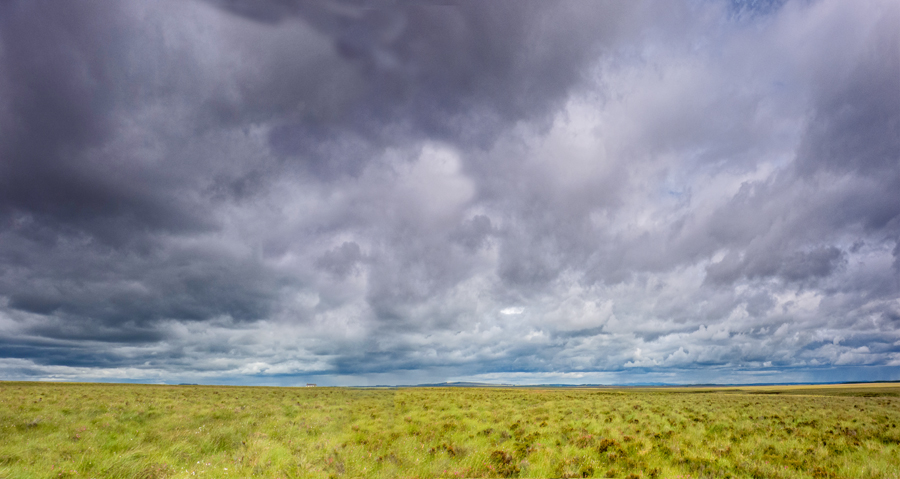
The 27th July was the longest day of all. Jack and I headed for the far south-eastern corner of the Reserve – the furthest point from Munsary Cottage – while John and Sam headed for the far south-western corner – still a long slog. Our journey was made all the harder by the success of Plantlife’s restoration management because an area of formerly-dry, drained bog had its drains blocked a few years ago. The response of the bog has been remarkable, with thick, very soft carpets of Sphagnum bog moss (including many hummocks of the increasingly rare S. austinii) growing luxuriantly (and therefore storing huge amounts of carbon) and in many cases overtopping the installed dams:
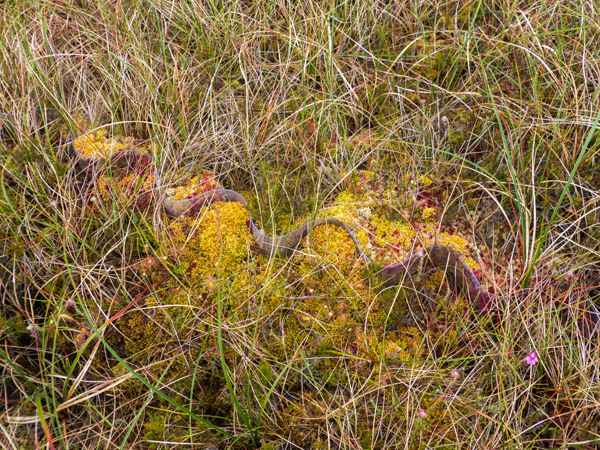
While this is excellent news for the bog, it meant that Jack and I were wading across ground that was harder to cross than the worst kind of soft sand-dune. Very exhausting, and on our longest day, too. Little did we know that things were to become even more exciting, even challenging, later in the day…
Luckily the weather remained kind all the way to our far transect point, and although the sky was a jumbled mass of cumulus, stratocumulus and cumulonimbus, the passing showers all passed either side of us. Occasional patches of blue gave swathes of bright sunshine which sometimes gave us views almost to the distant eastern coastline:
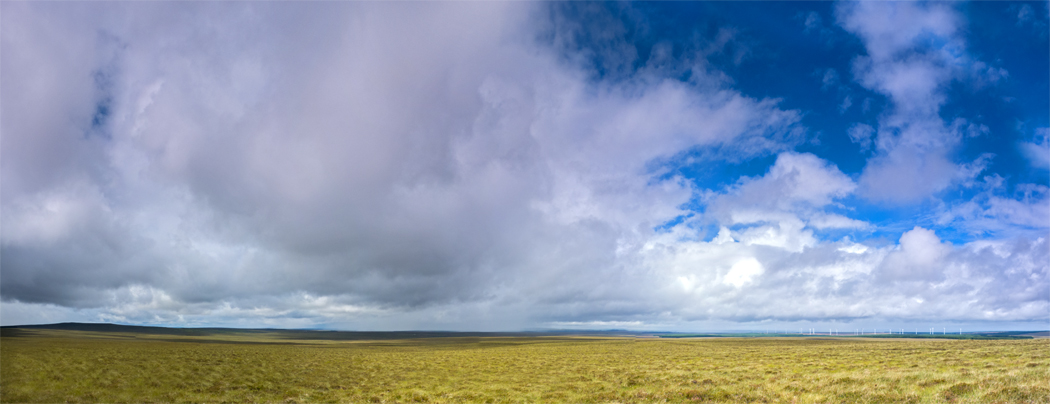

As we finally turned to head back, however, the clouds coming over the ridge from the west became increasingly ominous and threatening:
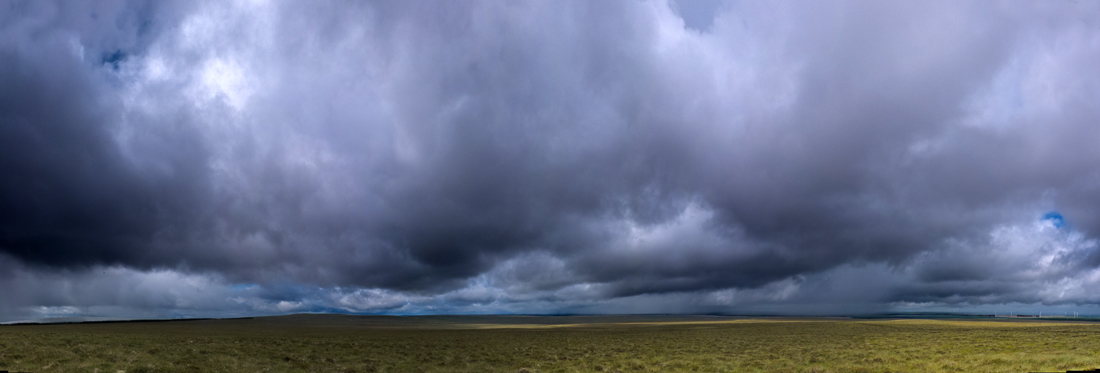
Within a short time we were walking straight into a series of drenching showers and the wind was blowing it straight into our faces. We still had one more transect to do…
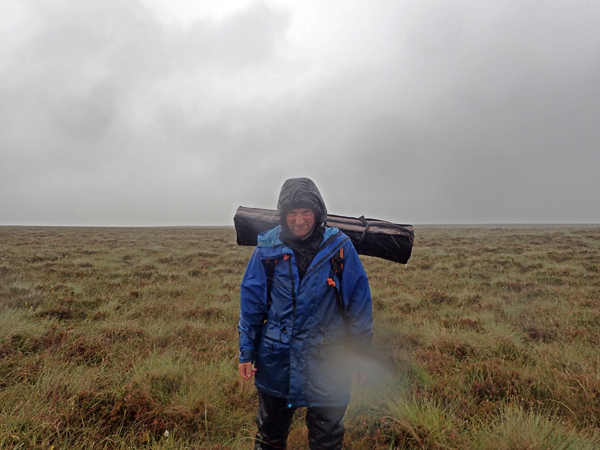
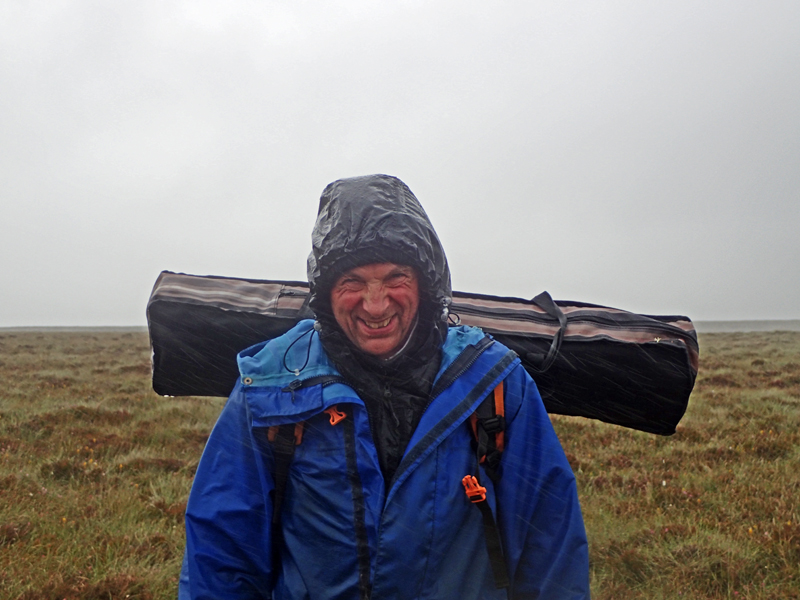
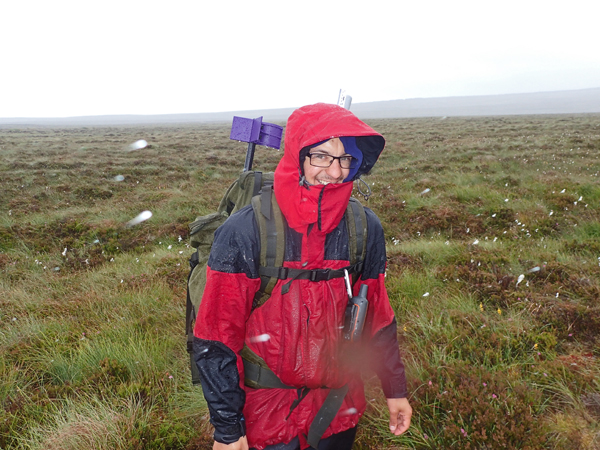
Fortunately the rain eased off while we completed our final transect of the 2016 monitoring, but then a huge black cumulonimbus came racing over the ridge towards us emptying everything it had onto the bog below. Jack and I looked at each other, contemplated walking face first into that lot and decided unanimously that we would use the folding camp-bed as a wind-break shelter from the coming storm:
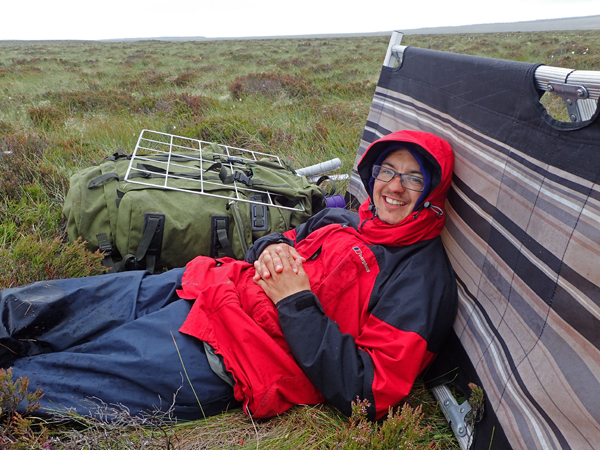
Indeed I made myself so comfortable behind our improvised wind-break with my head resting on my soft rucksack, combined with the release of tension after finally completing our transects for this trip, that I promptly fell asleep and started snoring gently:
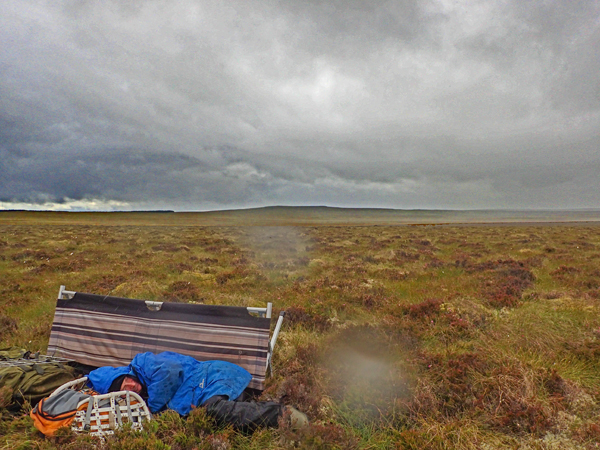
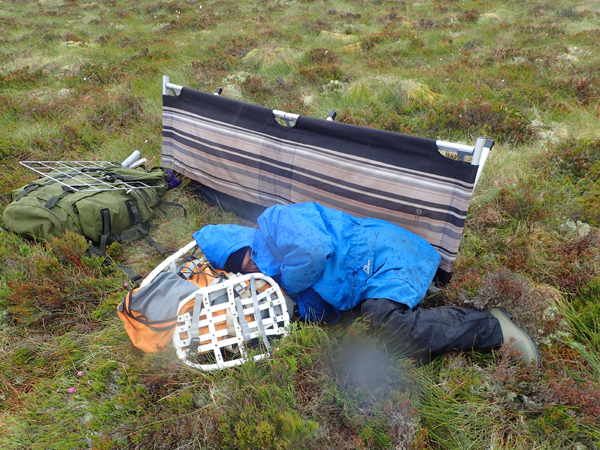
So soundly was I asleep that Jack began to worry that I must be in the second classic stages of hypothermia, when in fact I was very cozy and just completely relaxed. After the worst of the rain had passed, much to Jack’s relief I woke up refreshed and ready to go, so we packed everything up and headed back to Munsary Cottage and the waiting Land Rover – managing to get drenched twice more before we actually reached the cottage. To celebrate the end of the transect work, we drove back down the long track playing ‘Spring’ from Vivaldi’s ‘Four Seasons’, then the soundtrack to ‘Gladiator’ (we’re nothing if not eclectic) through the Land Rover sound-system – all very epic as we drove through the dramatic skies and wild landscape.
The dawn of our final day on site saw dramatic ribbons of stratocumulus streaming over ‘Northern Lights’, but fortunately it didn’t presage anything more uncomfortable than a somewhat chilly wind and a generally grey sky.
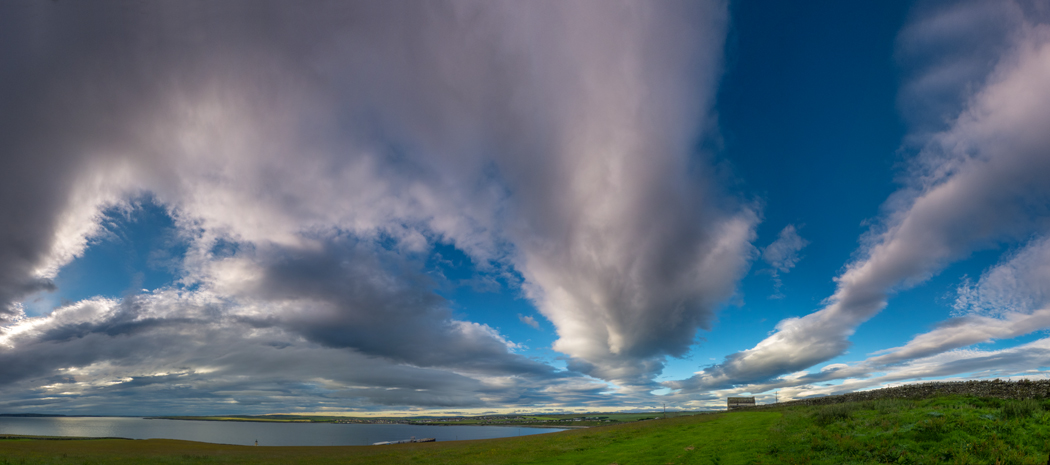
After finishing off our last tasks on site and obtaining some useful peat cores for Jerushah’s PhD, we headed back to Thurso for a celebratory meal at the Y-Not Inn, then back to ‘Northern Lights’ to begin packing for our departure in the morning. Munsary Monitoring 2016 was over (bar the analysis and write-up) and would now be passed to the ERI in Thurso for the next monitoring round, due in 2023…!
Floreat Munsary Peatlands…!
To finish, I just want to thank everyone who made this possible. As well as the team listed in Part 1 of this blog, I should also like to thank UEL for providing the REF-sourced funding to enable us to do the work, Davie Black of Plantlife for providing additional funding, the ERI in Thurso for providing so much assistance throughout, Jennifer Hartman for sorting out so much of our initial financing and purchasing, and Alan Chandler for offering the opportunity to seek REF-fund money for this work in the first place. I must then just say a final ‘thank you’ to the team – Jack, John, Roxane, Gearoid, Sam, Jerushah, Pete and Nathalie. The work would have been impossible – and much less fun – without you.
